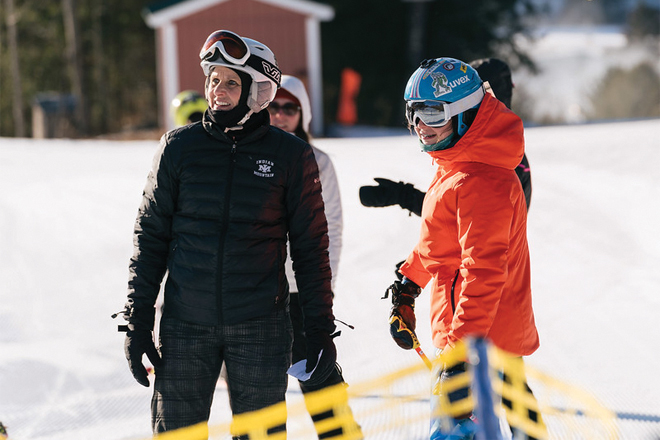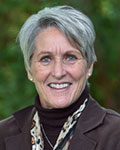Competitive athletics have always been a passion of mine — swimming, skiing, playing tennis and running track. But skiing more often than not rose to the top. During my last two winters in high school, I decided to ski train full-time, which meant doing my schoolwork independently and training five days a week to prepare for competitions. Then when I attended Springfield College as a physical education undergrad in the late 70s and early 80s, I was on the track team, but took a break from school so I could focus on skiing as a member of the U.S. Freestyle Ski Team. At that time all, all freestyle competitors skied in three different events — moguls, aerials and ballet — and our results were compiled as an overall score like gymnastics. Ballet skiing is no longer an event, and today each event is separate, so now freestylers are either a mogul skier or an aerialist.

In the years since my professional training, I have never lived far from a ski mountain. But I didn’t get involved in coaching until the 90s, when I served as the business officer at Steamboat Mountain School, a small day and boarding school in Steamboat Springs Colorado. There I assisted with the recreational ski program, coached for the local club, and on the weekends judged freestyle skiing, which includes aerials and moguls, among other styles. My own children competed, so it was a natural fit. Eventually we moved to Connecticut, where the mountains and training opportunities weren’t the same, so we dialed back our commitments to skiing.
Fast forward to 2019 at Indian Mountain School, when our athletics department found themselves without a ski coach. While I had not been involved in alpine (also known as downhill) ski racing since high school, I felt I had the qualifications to step up and head the small, five-skier squad who desperately needed a coach. Whether downhill or freestyle, the drills and activities of dryland training — that is, training off the slope — are the same, and many of the skills for different events of ski racing have crossover.
Dryland training is tough work, and at a young age, it’s important to keep it fun and interesting, so we mix it up each day, explain the “why” behind each drill or exercise, and play games with the drills.
For dryland training, we run through agility drills using rope ladders and benches, and do lots of obstacle courses. We work on leg strength through wall sits and strength challenges. And as with any competitive sport, we do aerobic training, in our case through running, sprints and hiking up the mountain. Dryland training is tough work, and at a young age, it’s important to keep it fun and interesting, so we mix it up each day, explain the “why” behind each drill or exercise, and play games with the drills. We work on technique by setting up mock racecourses with cones, which kids run through holding their poles.
Coaching is a serious commitment; it takes me away from the business office for three hours each day. But becoming a part of the athletics program is well worth it. Sharing a huge passion of mine while working directly with our students is nothing short of uplifting. I also enjoy the camaraderie of working alongside the faculty in the recreational ski program. We share administrative duties and work collaboratively to ensure all skiers have a safe experience. Stepping out of the business office allows me to understand more fully the day-to-day challenges and demands of faculty while at the same time experiencing the joy of getting to know our students.

During the first winter of the COVID-19 pandemic, we competed interscholastically with 17 skiers, as skiing was the only sport that could be safely conducted with social distance protocols in place. We were very successful, winning all three races. In 2022, we won all six races, placing six or seven racers in the top 10 at each race. Races are based on points, with first place earning the highest points. While we have been racing teams with similar grades, we hope this year to compete in a couple secondary school races to provide a higher level of competition for some of our advanced skiers.
It’s been a thrill to see the kids who competed in my first year, who now co-captain, grow and mature. The team has 25 skiers this season, and I now have an assistant coach to meet the needs of our growing squad. As I enter my fourth year as the ski team coach, it only becomes more apparent what a blessing it is to have an opportunity that I could have only dreamed of when I was hired.






